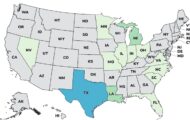A Salmonella outbreak in Minnesota that is linked to recalled raw pet food is highlighting a question that pet owners face. Should you feed your pet raw food? Consumer Reports weighs in.
 In that outbreak, two children were sickened after pets in their home were fed Raws for Paws ground turkey pet food. One of the children was hospitalized with osteomyelitis, a serious and painful bone infection that can cause fractures later in life.
In that outbreak, two children were sickened after pets in their home were fed Raws for Paws ground turkey pet food. One of the children was hospitalized with osteomyelitis, a serious and painful bone infection that can cause fractures later in life.
Sales of raw frozen and refrigerated pet foods has grown by 263% from 2011 to 2017, but those diets are controversial. Some vets say that those products are not nutritionally balanced. The products can contain raw organ meats, whole or crushed animal or fish bones, unpasteurized milk, uncooked eggs, and raw produce.
Any raw meat can be contaminated with pathogenic bacteria. That’s why cooks are warned to treat all raw meat in the kitchen as a potentially hazardous food. Many serious and deadly food poisoning outbreaks have been linked to raw and undercooked meats, poultry, and seafood in the past few years. And raw milk and raw eggs have been linked to many foodborne illness outbreaks as well.
Studies bear this out. A study published in Vet Record in December 2017 showed that 28 of 35 commercial frozen raw meat diets from eight different brands were contaminated with antibiotic-resistant E. coli bacteria. Eight of those samples tested positive for E. coli O157:H7, a shiga toxin-producing strain that can cause serious illness, including hemolytic uremic syndrome, and death. Samples also tested positive for Salmonella (20% of products) and Listeria monocytogenes bacteria (54% of products). The raw pet food that was not frozen also contained parasites, including Toxoplasma gondii.
Advocates say that raw foods are better for your pet. But studies show otehwise. A paper published in the Journal of American Veterinary Medical Association in 2001 found that home-prepared and commercial raw diets were deficient in vitamins A and E, and contained overly high doses of vitamin D. Another study in 2011 published in the British Journal of Nutrition found that 60% of homemade raw meats for dogs had deficiencies or excesses of 12 nutrients. And any food that contains raw bones could break a pet’s teeth, or puncture the esophagus, stomach, small intestine, or colon.
The FDA, CDC, and most veterinarians warn against feeding pets raw food. Michael San Filippo, a spokesman for the American Veterinary Medical Association told Consumer Reports, “These diets could expose animals and humans to dangerous bacteria such as Salmonella, E. coli, and Campylobacter.”
The potential problems with a raw pet food diet are many. First, any animal who eats these products and ingests pathogenic bacteria can get sick and pass that illness on to people. Even if the animal doesn’t display signs of illness, they can shed bacteria in their feces. People can then ingest the bacteria by petting the animal and not washing their hands well before eating. Dogs and cats can also transmit pathogenic bacteria by licking your fact, or by scratching you after they step in feces in the litterbox or outside. As evidenced by the current outbreak, children are more susceptible to this method of transmission.
In fact, a study published in the journal BMC Veterinary Research found that dogs fed raw food are 23 times more likely to shed Salmonella bacteria in their feces. The feces can get onto the dogs coat. And when people clean up after their dogs, they can get the bacteria onto their skin.
Second, humans can get sick by not handling the raw pet food properly. Cross-contamination can occur between the food and other surfaces in the kitchen.
Raw pet food manufacturers claim that dogs and cats can handle raw meat, but while these animals are slightly less sensitive to pathogenic bacteria in those products, they can still get sick from it.
One other issue is that consumers may not even know they are feeding their pet raw food. The food may be freeze-dried or dehydrated, processes that pathogenic bacteria can survive. These products include rawhide chews, pig ears, cattle hooves, hearts, and puzzle sticks.
The FDA tells consumers to avoid raw pet food diets completely. Talk to your vet before you decide to feed a raw food diet to your cat or dog. And handle the food with care. Freezing doesn’t kill bacteria. Clean and disinfect everything that may have touched the raw food. Wash your hands well with soap and water after handling the food. Properly dispose of leftovers. And clean and sanitize your pet’s food bowl after every meal.
If you feed your pet raw food, don’t kiss your pet around its mouth. Don’t let your pet lick your face. Monitor children when they are around the animal, and always wash your hands and your children’s hands thoroughly with soap and water after touching your pet.




